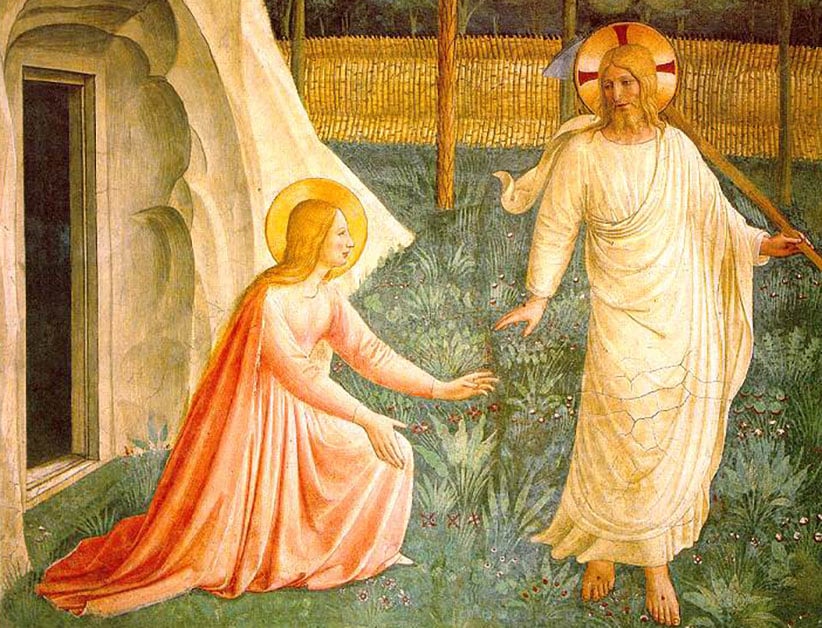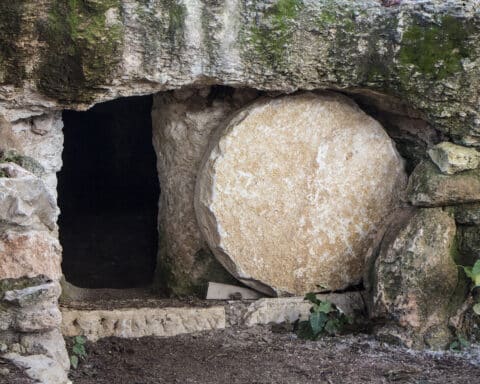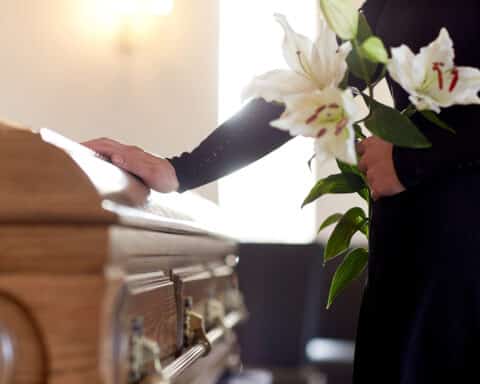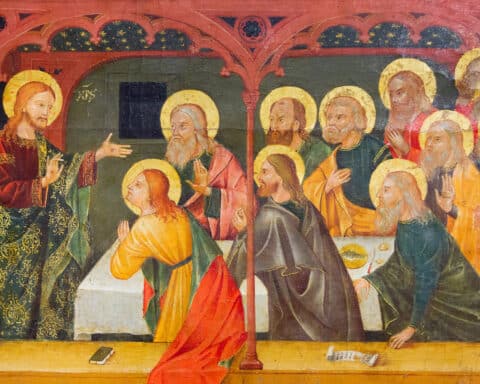Our hope begins at a tomb.
It was empty, of course, but Mary Magdalene didn’t know it at the time. She thought he was in there, his body. It was only love that compelled her to be there, not hope. That was gone. Love held her in place, that dark and sad place. I doubt she hoped for anything at all in those early silent hours of mourning. She loved him, so she was there. She just had no idea what else to do. That’s what love does sometimes, it lingers around the graves of those who have gone.
But that’s where it all changed, that place where she loved without hope. That’s where her mourning in the morning was turned into joy — at the tomb. Well, at first it was disorienting. Mary thought someone had stolen the body. She ran to get Peter and John. They ran to see. And only that young mystic, John — or whoever that “other disciple” was — saw the empty tomb and believed, but still, it was inchoate belief. But, of course, that’s how hope often begins: as something that feels like chaos.
Yet that would soon give way to the comfort of his voice. If you keep reading the story, he called her by name, “Mary!” (Jn 20:16). Like a child calmed in her father’s arms, like a sobbing friend quieted in a loving embrace, Mary Magdalene’s love without hope and her disorientation gives way to him, Jesus risen from the dead. It is something unimagined, beyond belief if it weren’t for the fact that he calls her by her name. But that’s how hope so often begins: within the personal call of the Risen Christ.
Hope in unlikely places
This is the pattern. The alternative Easter offers is that now it’s possible to look for hope in unlikely places — places like tombs. Not in palaces, not among politicians, not among the allegedly perfect, but in those other places where real love has carried you, especially those places where love hasn’t given up but where it probably, reasonably, should have — in the tombs of our lives.
| March 31 – Easter Sunday — The Resurrection of the Lord |
|---|
|
Acts 10:34, 37-43 Ps 118:1-2, 16-17, 22-23 Col 3:1-4 Jn 20:1-9 |
Maybe it’s the tomb of a friendship you’re afraid is dead forever or the tomb of your child’s soul wandered away from the Church. Maybe, it’s the tomb of our country, the tomb of the world where hope is almost entirely inconceivable. Maybe, it’s in the countless new tombs of today’s Holy Land. Maybe it’s your own tomb, the death your sins have brought to your poor soul. Maybe it’s where wherever you cry because you can think of nothing else worth doing.
Easter begins there; that’s the point. “One flame will pierce the eternal shadows,” Charles Péguy once wrote. I’ve always read that to mean that no matter how dark things get, those other things like faith and hope and love are still there in the darkness, hidden sometimes in the tears we cry because of love. That’s what Mary Magdalene teaches. That hope begins sometimes in tears. And she also shows us that it’s okay to linger about the tombs of our sadness, broken relationships, our failures. That’s okay. Just don’t forget to love, and don’t forget to listen.
Because — and this is so beautiful — Jesus makes his first resurrection appearance precisely when and where we are disoriented and sad. He doesn’t wait for Mary Magdalene to sort herself out and calm down. He doesn’t wait for her tears to dry. He visits her at his own tomb. He visits her where she loves and hurts.
Again, this is the pattern, the lesson, Easter’s strange suggestion, that even in the tombs of our lives, even when there’s no reasonable ground to hope, we still do not despair. Because that is how hope begins: when the risen Jesus walks into your own darkness and calls your name, love for you for the love you held on to.





